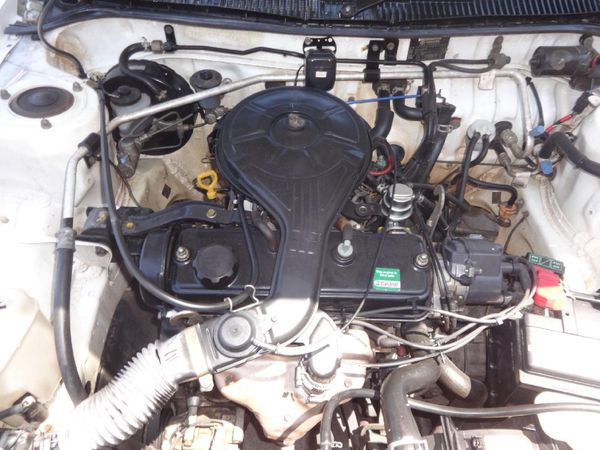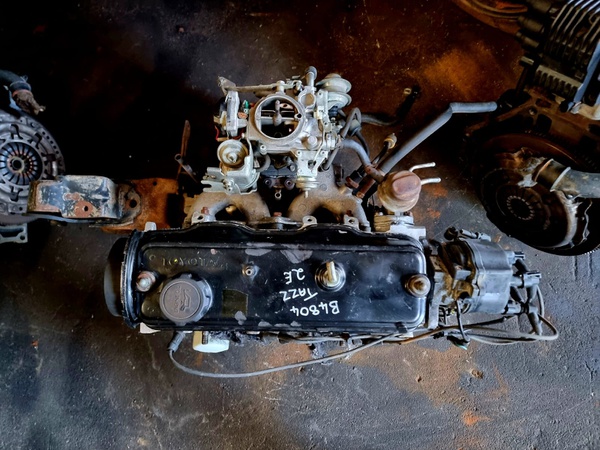Explore the most up to date Trends in Engine Innovation With Tazz
In the quickly progressing landscape of vehicle modern technology, Tazz stands at the leading edge, highlighting considerable developments in engine systems that prioritize both development and sustainability. tazz. From crossbreed engines that maximize fuel performance to the appearance of hydrogen fuel cells, the fads shaping modern-day powertrains are not only improving efficiency yet likewise addressing critical ecological challenges. As the industry remains to push borders, it is vital to take into consideration how these advancements will certainly affect future transport services and the more comprehensive ramifications for global energy usage. What lies in advance in this critical makeover?
Hybrid Engine Innovations
Hybrid engine advancements represent an essential shift in automobile innovation, combining the advantages of inner burning engines with electrical propulsion systems. This combination not just enhances gas efficiency but also decreases discharges, conference progressively rigid ecological policies. By using both energy resources, hybrid engines can optimize efficiency, delivering power when required while preserving gas during less requiring motoring problems.
Recent innovations in hybrid modern technology include renovations in battery performance and regenerative braking systems. These developments permit higher power recovery during deceleration, which can be redirected to assist in acceleration or power accessory systems. Suppliers are concentrating on portable designs and lightweight materials to make the most of the performance of crossbreed powertrains.
The development of plug-in hybrids has also broadened the marketplace, enabling chauffeurs to charge their lorries using standard electric outlets. This attribute frequently enables considerable all-electric range, more reducing dependancy on typical fuels. tazz. As the auto sector proceeds to evolve, hybrid engine modern technologies are expected to play a crucial duty in bridging the space between conventional cars and fully electric designs, supplying a transitional solution that deals with diverse consumer needs and preferences
Breakthroughs in Electric Powertrains
The automobile landscape is quickly advancing, with electric powertrains becoming a leading force in sustainable transport. Developments in electric automobile (EV) technology are substantially boosting efficiency, efficiency, and individual experience. Trick developments consist of improvements in battery chemistry, which have raised power density, minimized charging times, and expanded total battery life.
Solid-state batteries, for instance, promise to revolutionize the market by giving greater security and efficiency compared to typical lithium-ion cells. Advancements in regenerative stopping systems are enabling automobiles to recover power during slowdown, adding to overall effectiveness.
In addition to battery modern technology, electrical motor designs are ending up being a lot more advanced. Technologies such as incorporated electric motors and progressed thermal management systems are aiding to maximize power shipment and reduce weight, inevitably improving vehicle dynamics.

Jointly, these breakthroughs emphasize the commitment to shift in the direction of cleaner, much more efficient transport solutions, positioning electric powertrains at the center of vehicle development.
The Increase of Hydrogen Gas Cells
Significantly, hydrogen gas cells are obtaining traction as a viable choice to traditional interior burning engines and battery electric vehicles. This technology utilizes the chemical energy saved in hydrogen, transforming it into electrical energy via an electrochemical response with oxygen. The key byproduct of this process is water, making hydrogen fuel cells an eco-friendly alternative with absolutely no discharges at the tailpipe.

Automakers are significantly buying hydrogen gas cell innovation, acknowledging its capacity for long-range applications and fast refueling capacities that rival traditional fuels. Additionally, industries such as sturdy transport and public transit are especially fit for hydrogen gas cells, where battery electrical solutions may fail due to weight and range limitations.
As research study and financial investment continue to broaden, hydrogen fuel cells are poised to play a substantial duty in the future landscape of tidy transport and energy options.
Enhancements in Internal Burning Engines
Developments in inner burning engine (ICE) technology are changing standard cars to satisfy modern environmental requirements and performance expectations. Among the most considerable improvements involves the combination of sophisticated gas injection systems. These systems maximize the air-fuel blend, enhancing burning efficiency and leading to reduced emissions. Straight fuel shot, as an example, enables far better atomization of fuel, causing more full Read Full Report combustion and improved power result.
Additionally, turbocharging has gained prestige, enabling smaller engines to deliver greater efficiency without the weight of larger engines - tazz. This technology not only enhances effectiveness however likewise adds to reduce gas intake. Variable valve timing systems are additionally being refined, allowing engines to adapt to numerous driving problems for improved torque and responsiveness
Furthermore, using light-weight materials in engine building and construction is becoming conventional, additional enhancing gas performance by decreasing total lorry weight. Engine control systems (ECUs) are increasingly sophisticated, enabling real-time changes that enhance performance and exhausts.
These enhancements collectively indicate a critical change in ICE modern technology, aligning with worldwide sustainability objectives while still giving the efficiency chauffeurs expect from their vehicles. As the sector advances, these renovations remain to form the future of conventional vehicle design.
Future Trends in Engine Performance
Significant improvements in engine performance are anticipated as producers focus on incorporating cutting-edge innovations to satisfy rigid environmental laws and consumer demands. The shift in the direction of electrification, crossbreed systems, and alternate gas is improving the automobile landscape, driving innovations that enhance gas economy and minimize discharges.
One of the key patterns is the application of innovative materials and manufacturing methods. High-strength alloys and light-weight composites add to decreased car weight, hence enhancing general effectiveness. Additionally, the fostering of turbocharging and variable shutoff timing technologies permits improved power output from smaller engines, even more boosting gas economy.

Conclusion
Finally, the expedition of engine innovation exposes considerable advancements that prioritize sustainability and efficiency. Innovations in hybrid engine systems, electric powertrains, and hydrogen gas cells demonstrate a dedication to minimizing emissions while boosting performance. Furthermore, improvements in internal combustion engines and an emphasis on light-weight materials add to general engine performance. As the auto industry remains to develop, these patterns will certainly play a vital function fit a cleaner and even more lasting future for transportation.
From hybrid engines that optimize gas efficiency to the emergence of hydrogen fuel cells, the fads shaping contemporary powertrains are not just enhancing performance yet likewise attending to critical ecological obstacles.Crossbreed engine innovations stand for a pivotal change in vehicle technology, integrating the benefits of interior burning engines with electric propulsion systems.Furthermore, turbocharging has actually gotten prestige, allowing smaller sized engines to supply greater performance without the weight of larger engines. Additionally, the adoption of turbocharging and variable shutoff timing technologies enables for boosted power result from smaller engines, further improving go gas economic climate.
Improvements in inner combustion engines and an emphasis on lightweight products add to overall engine effectiveness.